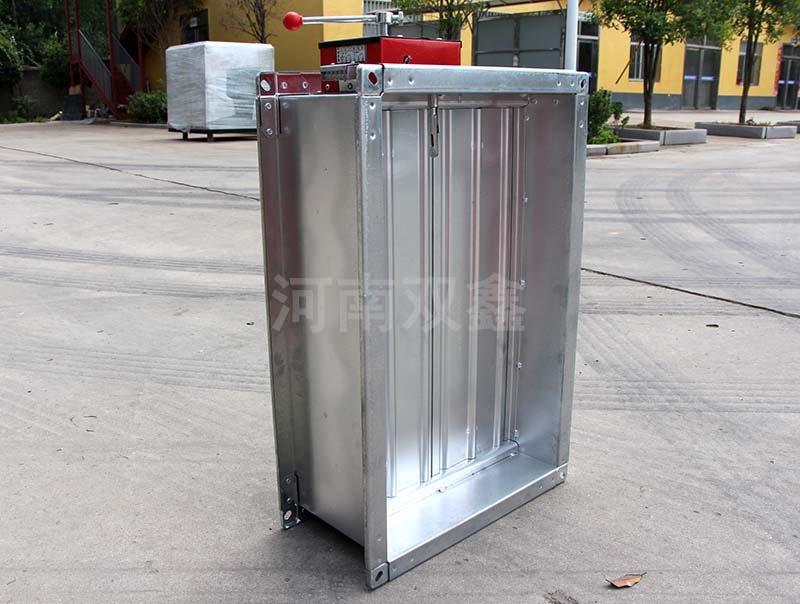 English
English Español
Español  Português
Português  русский
русский  Français
Français  日本語
日本語  Deutsch
Deutsch  tiếng Việt
tiếng Việt  Italiano
Italiano  Nederlands
Nederlands  ภาษาไทย
ภาษาไทย  Polski
Polski  한국어
한국어  Svenska
Svenska  magyar
magyar  Malay
Malay  বাংলা ভাষার
বাংলা ভাষার  Dansk
Dansk  Suomi
Suomi  हिन्दी
हिन्दी  Pilipino
Pilipino  Türkçe
Türkçe  Gaeilge
Gaeilge  العربية
العربية  Indonesia
Indonesia  Norsk
Norsk  تمل
تمل  český
český  ελληνικά
ελληνικά  український
український  Javanese
Javanese  فارسی
فارسی  தமிழ்
தமிழ்  తెలుగు
తెలుగు  नेपाली
नेपाली  Burmese
Burmese  български
български  ລາວ
ລາວ  Latine
Latine  Қазақша
Қазақша  Euskal
Euskal  Azərbaycan
Azərbaycan  Slovenský jazyk
Slovenský jazyk  Македонски
Македонски  Lietuvos
Lietuvos  Eesti Keel
Eesti Keel  Română
Română  Slovenski
Slovenski  मराठी
मराठी  Srpski језик
Srpski језик
What are the national standard specifications of 3C fire dampers?
2022-09-28
In the ventilation and air conditioning systems of industrial and civil buildings and underground buildings, fire dampers are a common fire protection product; and 3C fire dampers are the fire protection requirements for fire damper products under the premise of considering fire safety.
According to the national standard of "Fire Valves for Building Ventilation and Smoke Exhaust Systems GB15930-2007", Henan Shuangxin will take you to quickly understand the national standard specifications of 3C fire valves.

1. Definitions and terms of fire dampers
Fire damper, the name symbol is "FHF", the full English name is "fire damper".
It is installed on the supply and return air ducts of ventilation and air conditioning systems. It is usually open. In the event of a fire, when the flue gas temperature in the duct reaches 70°C, it will be closed, and it can meet the requirements of smoke leakage and fire integrity within a certain period of time. A valve that acts as a smoke and fire barrier.
2. Fire damper structure and material
Fire dampers are generally composed of "valve body, vanes, actuators and temperature sensors" and other components.
Among them: "Valve body, vane, baffle, actuator bottom plate and shell" should be made of "cold-rolled steel plate, galvanized steel plate, stainless steel plate or inorganic fireproof plate" and other materials.
Important moving parts such as "bearings, bushings, and ratchets (cams) in actuators" are made of corrosion-resistant materials such as brass, bronze, and stainless steel.
The production of various types of springs should meet the corresponding national standards.
3. Fire valve accessories: actuator
The actuator of the valve should be a qualified product tested by a nationally recognized and authorized testing agency.
The temperature sensor element in the fire valve actuator should be marked with its nominal operating temperature.
4. Appearance of fire damper
The sign on the valve should be firm, and the sign should be clear and accurate.
The surface of each part of the valve should be flat, and no defects such as cracks, craters and obvious bumps, hammer marks, burrs, and holes are allowed.
The welding seam of the valve should be smooth and flat, and no defects such as virtual welding, porosity, slag inclusion, and looseness are allowed.
The surface of each part of the metal valve should be treated with anti-rust and anti-corrosion. The treated surface should be smooth and flat, and the coating and coating should be firm, and there should be no peeling, cracking of the coating, paint leakage or flow.
5. Tolerance of fire valve
The linear dimension tolerance of the valve shall conform to the c-class tolerance level specified in "GB/T 1804-2000".
6. Driving torque and reset function
The driving torque generated by the closing force of the fire valve blade on the driving shaft should be greater than 2.5 times the torque required on the driving shaft when the blade is closed. The valve should have a reset function, and its operation should be convenient, flexible and reliable.
7. Control method: temperature sensor control
The fire damper shall have a temperature sensor control method to automatically close it.
The temperature sensor does not act, and the temperature sensor in the fire damper should not act within 5 minutes in a constant temperature water bath at 65°C ± 0.5°C.
The temperature sensor action performance, the temperature sensor in the fire damper should operate within 1min in a constant temperature water bath at 73℃±0.5℃.
8. Control mode: manual control
Fire dampers should have manual closing methods; smoke exhaust valves should have manual opening methods. Manual operation should be convenient, flexible and reliable.
Manual closing or opening operation force should not be greater than 70N.
9. Control mode: electric control
The fire damper should have an electric closing method. A valve with a remote reset function should have a signal output showing the position of the valve blade when it is powered on.
The working voltage of the electronic control circuit in the valve actuator should adopt the rated working voltage of DC24V. Its rated working current should not be greater than 0.7A.
When the actual power supply voltage is 15% lower than the rated working voltage and 10% higher than the rated working voltage, the valve should be able to operate normally electronically.
10. The closing reliability of the fire damper
After the fire damper or smoke exhaust fire damper has undergone 50 closing and opening tests, there should be no obvious deformation, wear and other damages affecting its sealing performance, and the blades can still be flexibly and reliably closed from the open position.
11. Corrosion resistance of fire dampers
After 5 cycles and a total of 120h of salt spray corrosion test, the valve should be able to open and close normally.
12. Air leakage of fire damper at ambient temperature
At ambient temperature, keep the gas static pressure difference of 300Pa±15Pa on both sides of the fire damper blade, and the air leakage per unit area (standard state) should not be greater than 500m3/(m2·h).
13. Fire resistance of fire dampers
Within 1min after the fire resistance test starts, the temperature sensor of the fire damper should act and the valve should be closed.
During the specified fire resistance time, keep the gas static pressure difference of 300Pa±15Pa on both sides of the fire damper blade, and the smoke leakage per unit area (standard state) should not exceed 700m3/(m2·h).
During the specified fire resistance time, the surface of the fire damper shall not have continuous flame for more than 10s.
The fire resistance time of the fire damper shall not be less than 1.50h.
According to the national standard of "Fire Valves for Building Ventilation and Smoke Exhaust Systems GB15930-2007", Henan Shuangxin will take you to quickly understand the national standard specifications of 3C fire valves.

1. Definitions and terms of fire dampers
Fire damper, the name symbol is "FHF", the full English name is "fire damper".
It is installed on the supply and return air ducts of ventilation and air conditioning systems. It is usually open. In the event of a fire, when the flue gas temperature in the duct reaches 70°C, it will be closed, and it can meet the requirements of smoke leakage and fire integrity within a certain period of time. A valve that acts as a smoke and fire barrier.
2. Fire damper structure and material
Fire dampers are generally composed of "valve body, vanes, actuators and temperature sensors" and other components.
Among them: "Valve body, vane, baffle, actuator bottom plate and shell" should be made of "cold-rolled steel plate, galvanized steel plate, stainless steel plate or inorganic fireproof plate" and other materials.
Important moving parts such as "bearings, bushings, and ratchets (cams) in actuators" are made of corrosion-resistant materials such as brass, bronze, and stainless steel.
The production of various types of springs should meet the corresponding national standards.
3. Fire valve accessories: actuator
The actuator of the valve should be a qualified product tested by a nationally recognized and authorized testing agency.
The temperature sensor element in the fire valve actuator should be marked with its nominal operating temperature.
4. Appearance of fire damper
The sign on the valve should be firm, and the sign should be clear and accurate.
The surface of each part of the valve should be flat, and no defects such as cracks, craters and obvious bumps, hammer marks, burrs, and holes are allowed.
The welding seam of the valve should be smooth and flat, and no defects such as virtual welding, porosity, slag inclusion, and looseness are allowed.
The surface of each part of the metal valve should be treated with anti-rust and anti-corrosion. The treated surface should be smooth and flat, and the coating and coating should be firm, and there should be no peeling, cracking of the coating, paint leakage or flow.
5. Tolerance of fire valve
The linear dimension tolerance of the valve shall conform to the c-class tolerance level specified in "GB/T 1804-2000".
6. Driving torque and reset function
The driving torque generated by the closing force of the fire valve blade on the driving shaft should be greater than 2.5 times the torque required on the driving shaft when the blade is closed. The valve should have a reset function, and its operation should be convenient, flexible and reliable.
7. Control method: temperature sensor control
The fire damper shall have a temperature sensor control method to automatically close it.
The temperature sensor does not act, and the temperature sensor in the fire damper should not act within 5 minutes in a constant temperature water bath at 65°C ± 0.5°C.
The temperature sensor action performance, the temperature sensor in the fire damper should operate within 1min in a constant temperature water bath at 73℃±0.5℃.
8. Control mode: manual control
Fire dampers should have manual closing methods; smoke exhaust valves should have manual opening methods. Manual operation should be convenient, flexible and reliable.
Manual closing or opening operation force should not be greater than 70N.
9. Control mode: electric control
The fire damper should have an electric closing method. A valve with a remote reset function should have a signal output showing the position of the valve blade when it is powered on.
The working voltage of the electronic control circuit in the valve actuator should adopt the rated working voltage of DC24V. Its rated working current should not be greater than 0.7A.
When the actual power supply voltage is 15% lower than the rated working voltage and 10% higher than the rated working voltage, the valve should be able to operate normally electronically.
10. The closing reliability of the fire damper
After the fire damper or smoke exhaust fire damper has undergone 50 closing and opening tests, there should be no obvious deformation, wear and other damages affecting its sealing performance, and the blades can still be flexibly and reliably closed from the open position.
11. Corrosion resistance of fire dampers
After 5 cycles and a total of 120h of salt spray corrosion test, the valve should be able to open and close normally.
12. Air leakage of fire damper at ambient temperature
At ambient temperature, keep the gas static pressure difference of 300Pa±15Pa on both sides of the fire damper blade, and the air leakage per unit area (standard state) should not be greater than 500m3/(m2·h).
13. Fire resistance of fire dampers
Within 1min after the fire resistance test starts, the temperature sensor of the fire damper should act and the valve should be closed.
During the specified fire resistance time, keep the gas static pressure difference of 300Pa±15Pa on both sides of the fire damper blade, and the smoke leakage per unit area (standard state) should not exceed 700m3/(m2·h).
During the specified fire resistance time, the surface of the fire damper shall not have continuous flame for more than 10s.
The fire resistance time of the fire damper shall not be less than 1.50h.
We use cookies to offer you a better browsing experience, analyze site traffic and personalize content. By using this site, you agree to our use of cookies.
Privacy Policy





